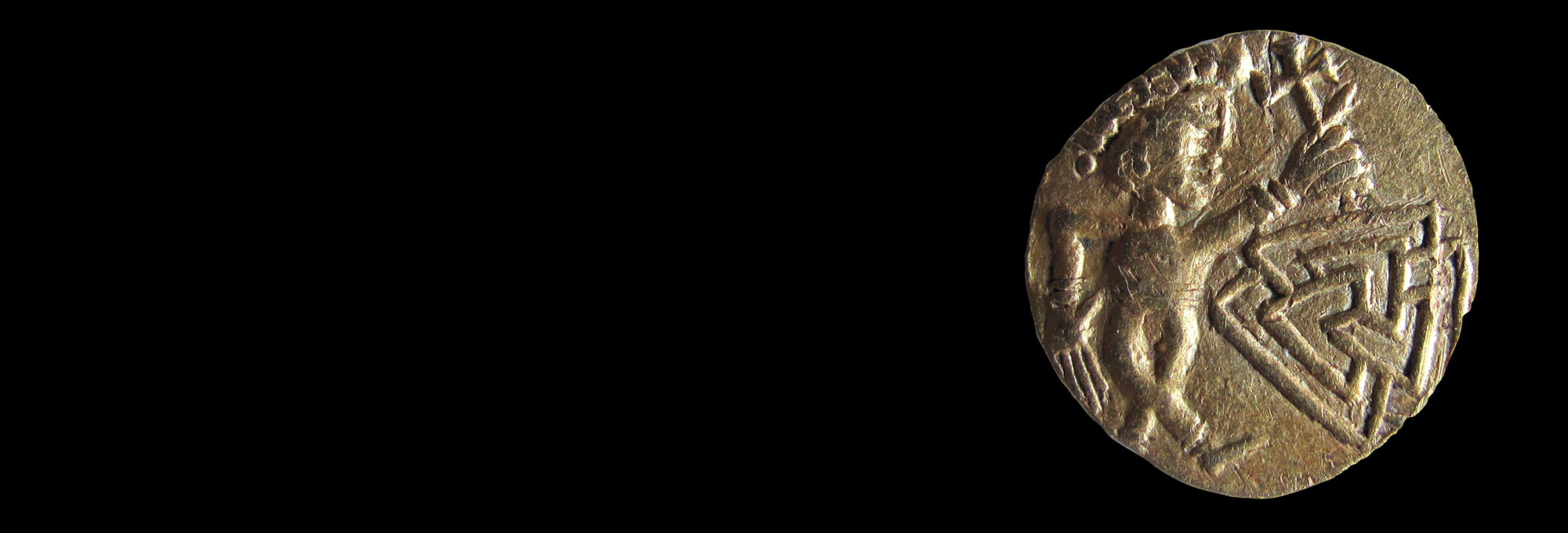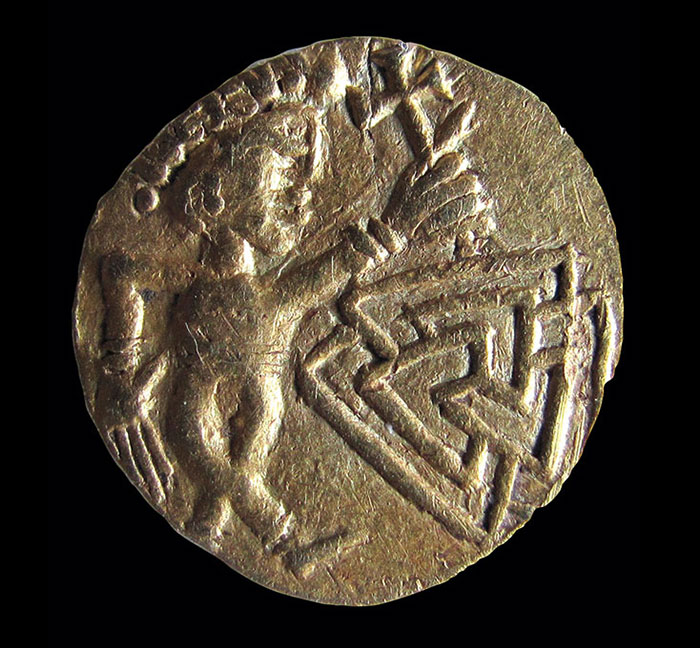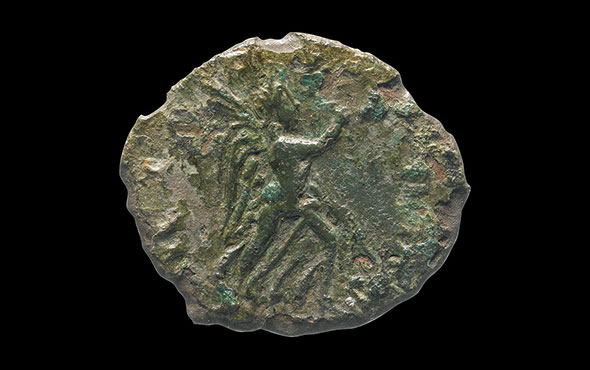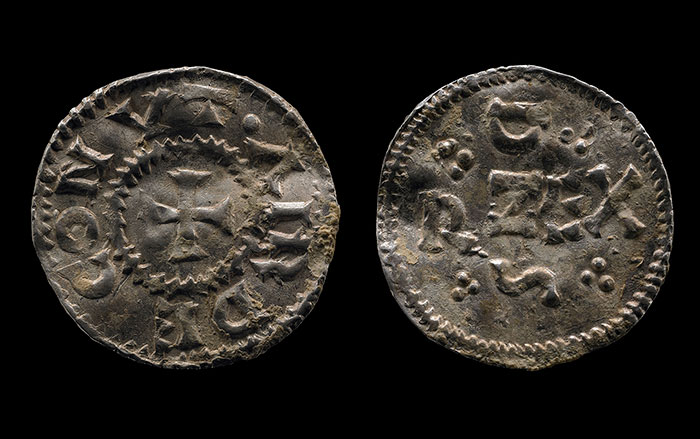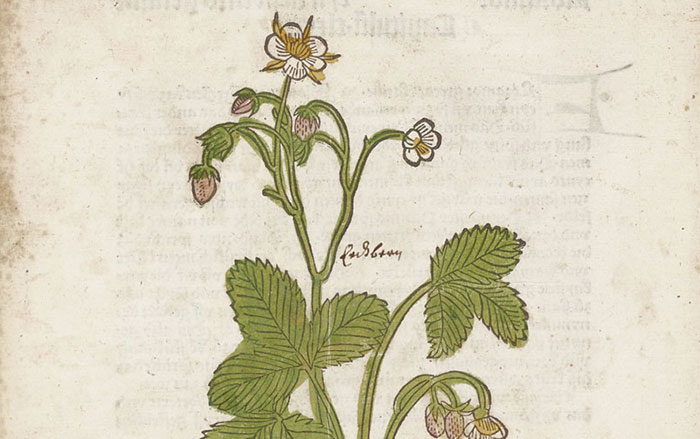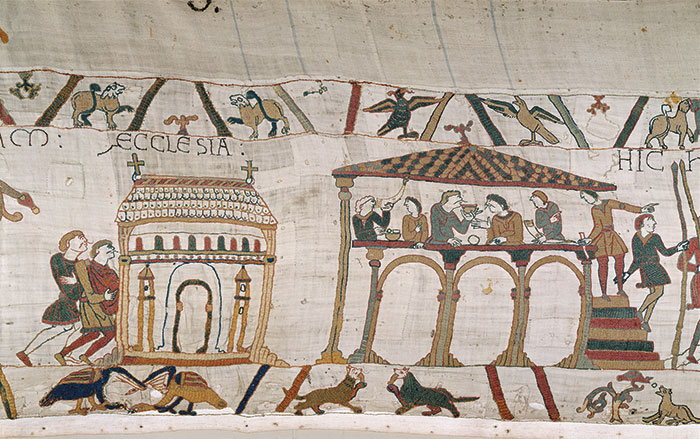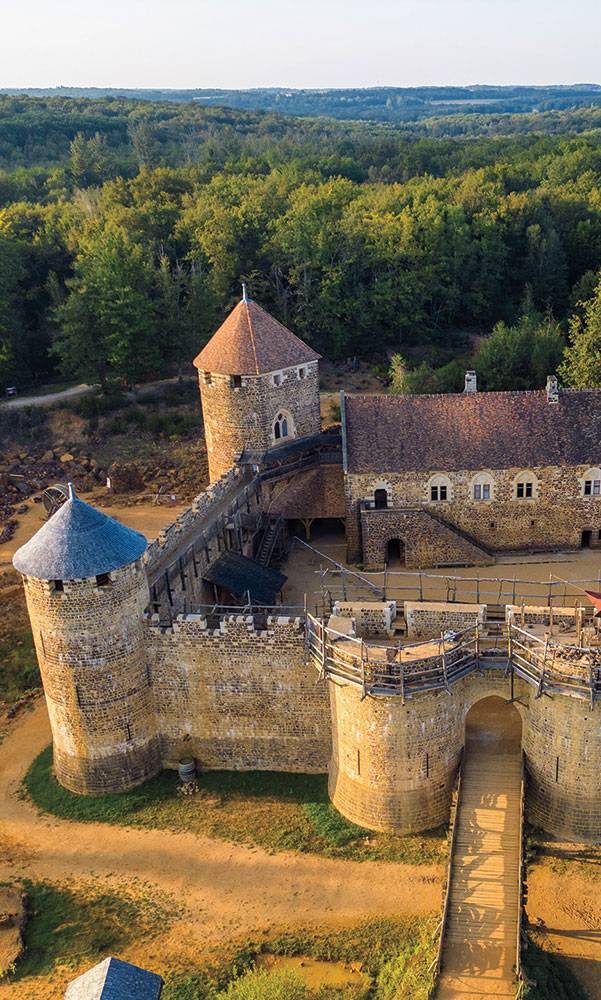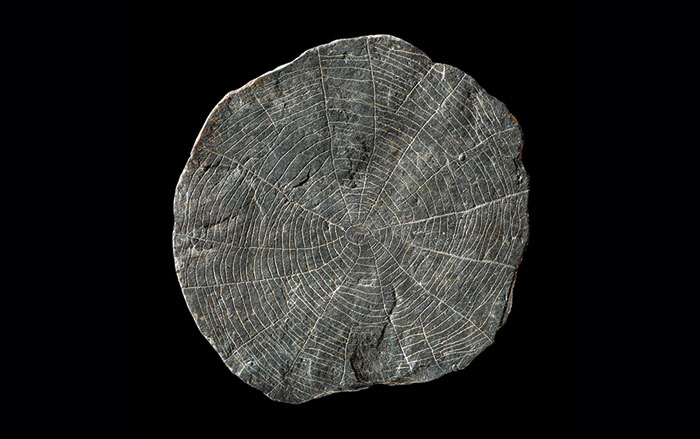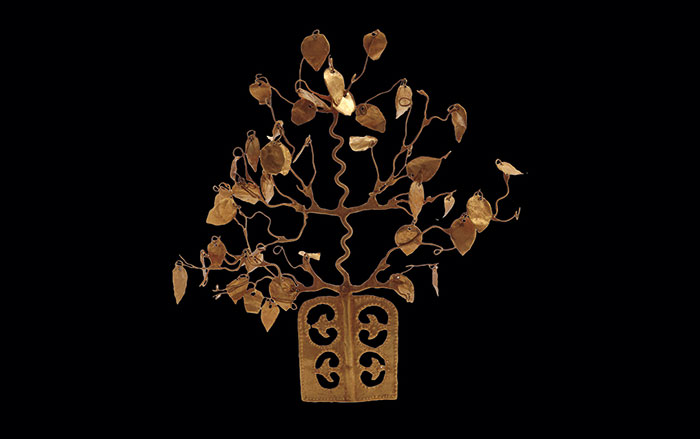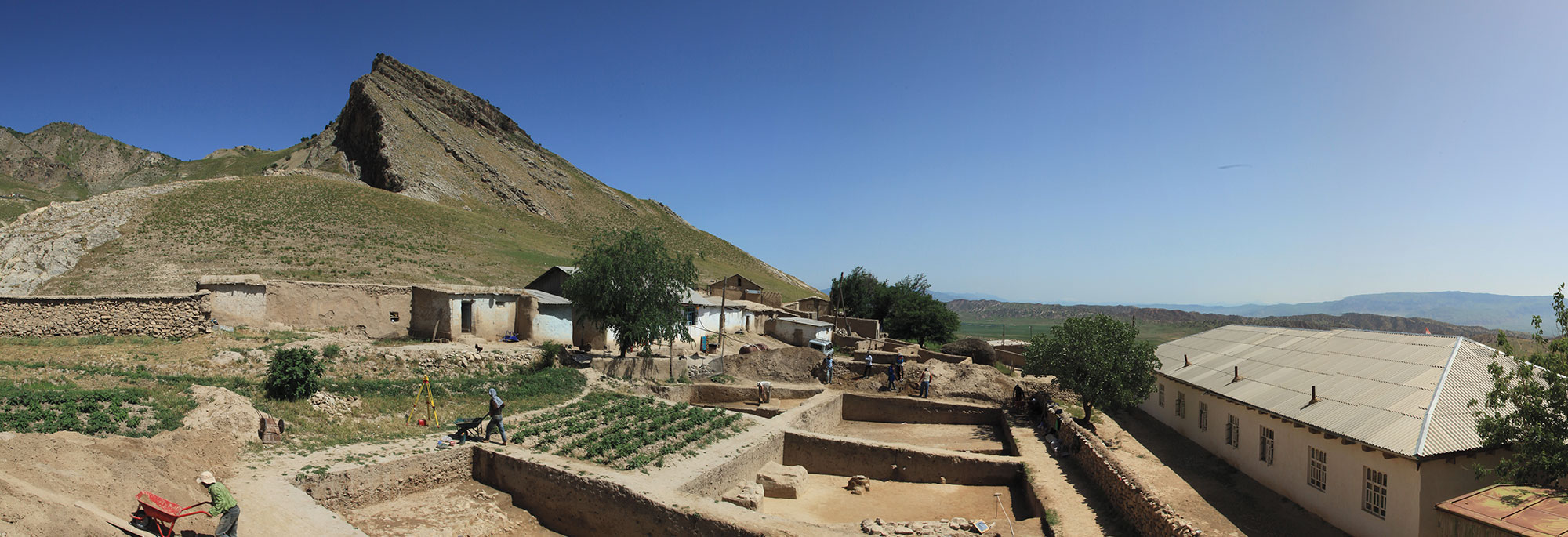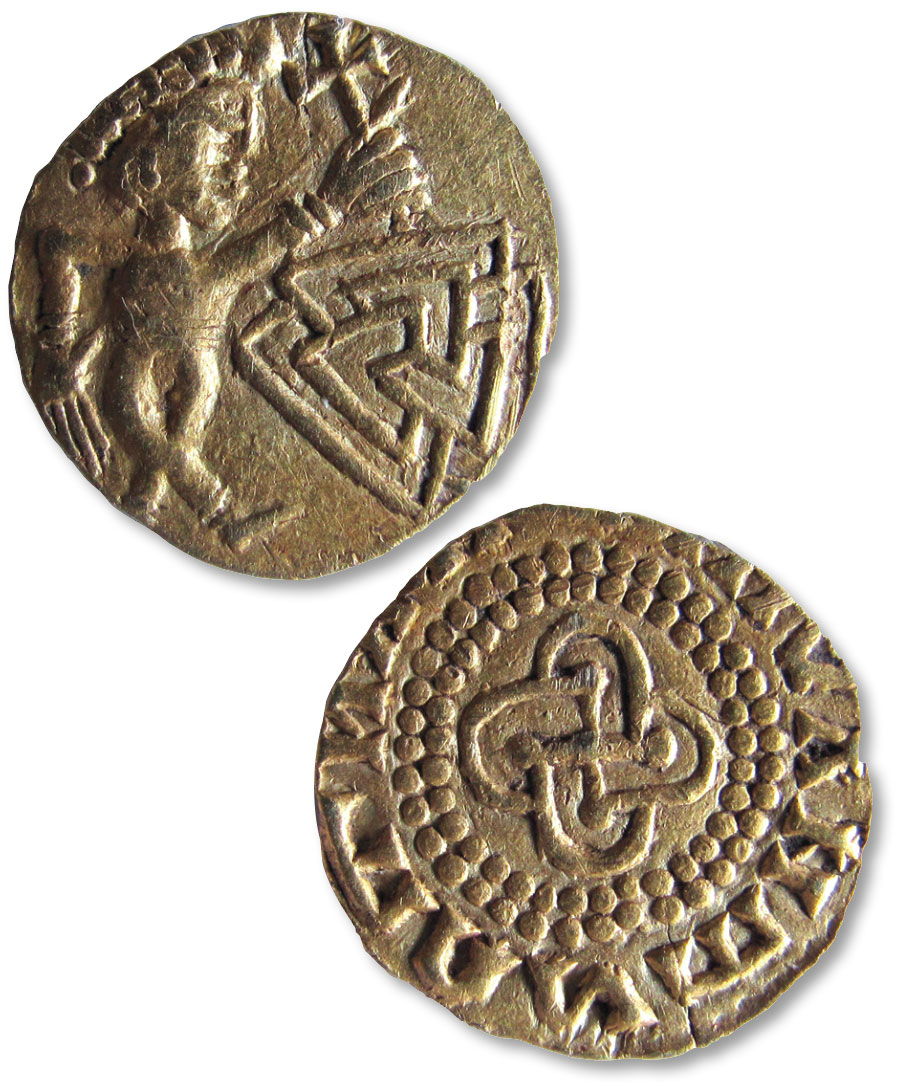
What is it?
Shilling coin, or thrymsa
Material
Gold
Culture
Anglo-Saxon
Date
a.d. 640–660
Dimensions
0.47 inches
Found
East Anglia, England
There are certain accoutrements that rulers across time appear to have agreed are necessary symbols of power. You probably want a crown, which might be made of precious metal, leaves, or possibly even feathers. You need a palace or at least some kind of headquarters, whether built of stone, timber, or earth. And, beginning in the seventh century b.c., when the first small lumps of electrum were stamped with a design and called money, you needed coins. For the first kings of Anglo-Saxon Britain, this was especially important.
In the sixth century a.d., these upstart monarchs were taking control of the area that would become the kingdom of East Anglia. Roman rule had ended at the start of the fifth century a.d., and a new order was taking hold. “At this time, the kingdom of East Anglia is evolving, and the kings are looking around and seeing what things people in authority should have,” says numismatist Adrian Marsden of the Norfolk Historic Environment Service. “There would have been Roman coins around, whether on the ground or mounted in jewelry, and they appear to have thought, ‘Roman emperors had coins, so we should have coins, too.’”
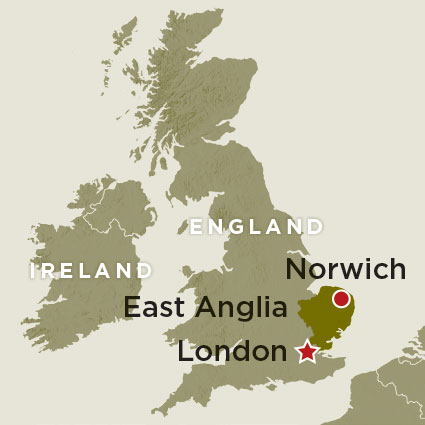
But it wasn’t enough just to have coins, says Marsden. Currency needed to convey something about the king. This coin—the first with its particular combination of imagery ever found—seems to encapsulate the transitional period in which it was struck. The front shows a crowned king holding a cross that he appears to be bringing down on a symbol known as a valknut associated with Norse mythology, likely a reference to Christianity’s triumph over paganism. The coin’s reverse depicts a cross or swastika, a symbol of good luck, encircled by an odd assortment of Latin letters. “They see things on Roman coins and say, ‘Coins have heads and inscriptions, so we should have heads and inscriptions,’” Marsden says. “But here you have a whole man, and the letters amount to gibberish—they haven’t yet quite got it right.”


